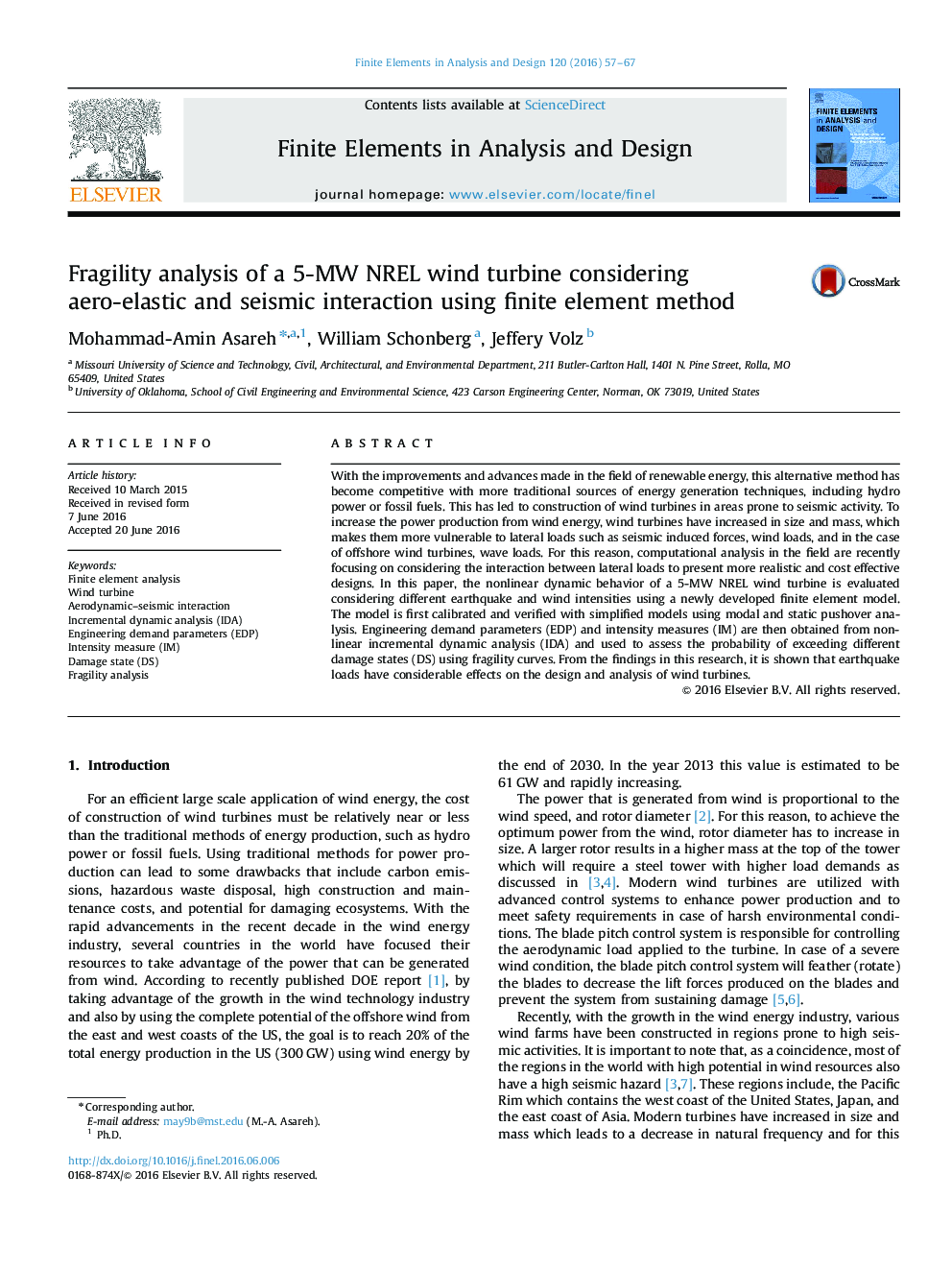| Article ID | Journal | Published Year | Pages | File Type |
|---|---|---|---|---|
| 513968 | Finite Elements in Analysis and Design | 2016 | 11 Pages |
•To increase the power production from wind energy, wind turbines have increased in size and mass, which makes them more vulnerable to seismic induced forces, wind loads, and in the case of offshore wind turbines, wave loads.•The nonlinear dynamic behavior of a 5-MW NREL wind turbine is evaluated considering different earthquake and wind intensities using a newly developed finite element model.•Engineering demand parameters (EDP) and intensity measures (IM) are then obtained from incremental dynamic analysis (IDA) and used to assess the probability of exceeding different damage states (DS).•Tower design for the 5-MW turbine was found to be acceptable in the case of simultaneous earthquake and wind loads applied with different intensities.•The results of fragility analysis was performed for 4 limit states which are top displacement, top rotation, material yielding, and total collapse (buckling).•Fragility analysis showed that probability of failure due to top displacement and top rotation are more likely to occur than failure due to material yielding and total collapse.
With the improvements and advances made in the field of renewable energy, this alternative method has become competitive with more traditional sources of energy generation techniques, including hydro power or fossil fuels. This has led to construction of wind turbines in areas prone to seismic activity. To increase the power production from wind energy, wind turbines have increased in size and mass, which makes them more vulnerable to lateral loads such as seismic induced forces, wind loads, and in the case of offshore wind turbines, wave loads. For this reason, computational analysis in the field are recently focusing on considering the interaction between lateral loads to present more realistic and cost effective designs. In this paper, the nonlinear dynamic behavior of a 5-MW NREL wind turbine is evaluated considering different earthquake and wind intensities using a newly developed finite element model. The model is first calibrated and verified with simplified models using modal and static pushover analysis. Engineering demand parameters (EDP) and intensity measures (IM) are then obtained from nonlinear incremental dynamic analysis (IDA) and used to assess the probability of exceeding different damage states (DS) using fragility curves. From the findings in this research, it is shown that earthquake loads have considerable effects on the design and analysis of wind turbines.
